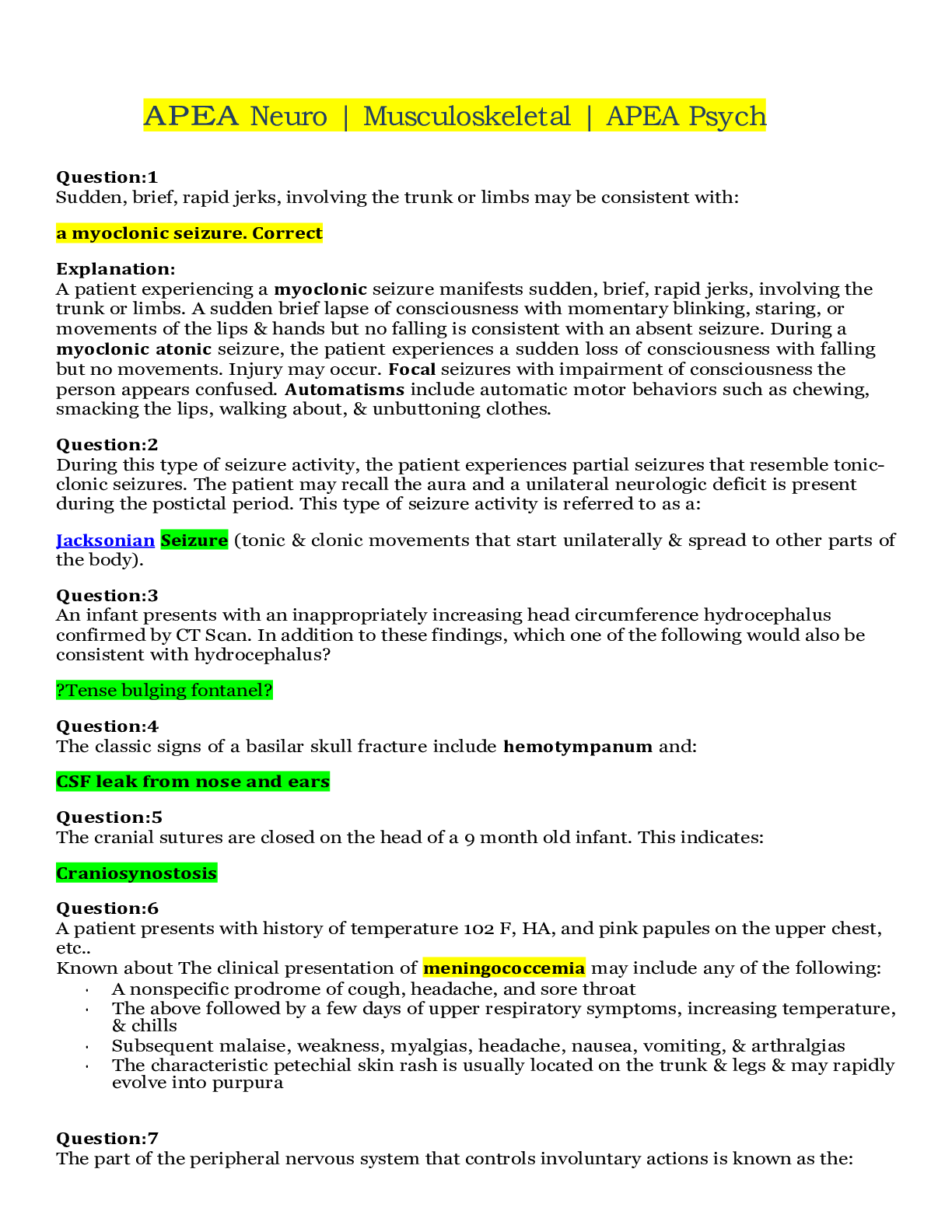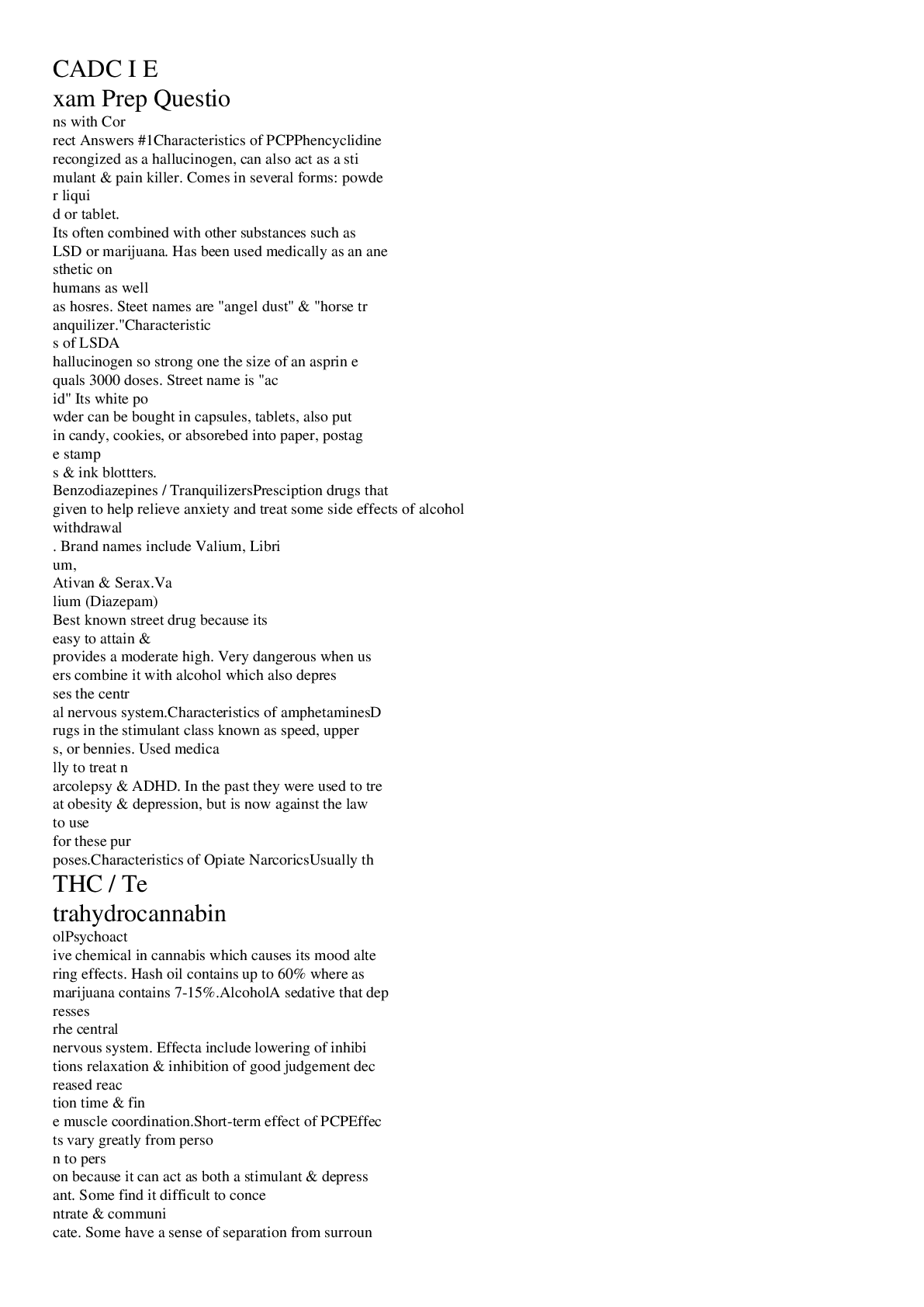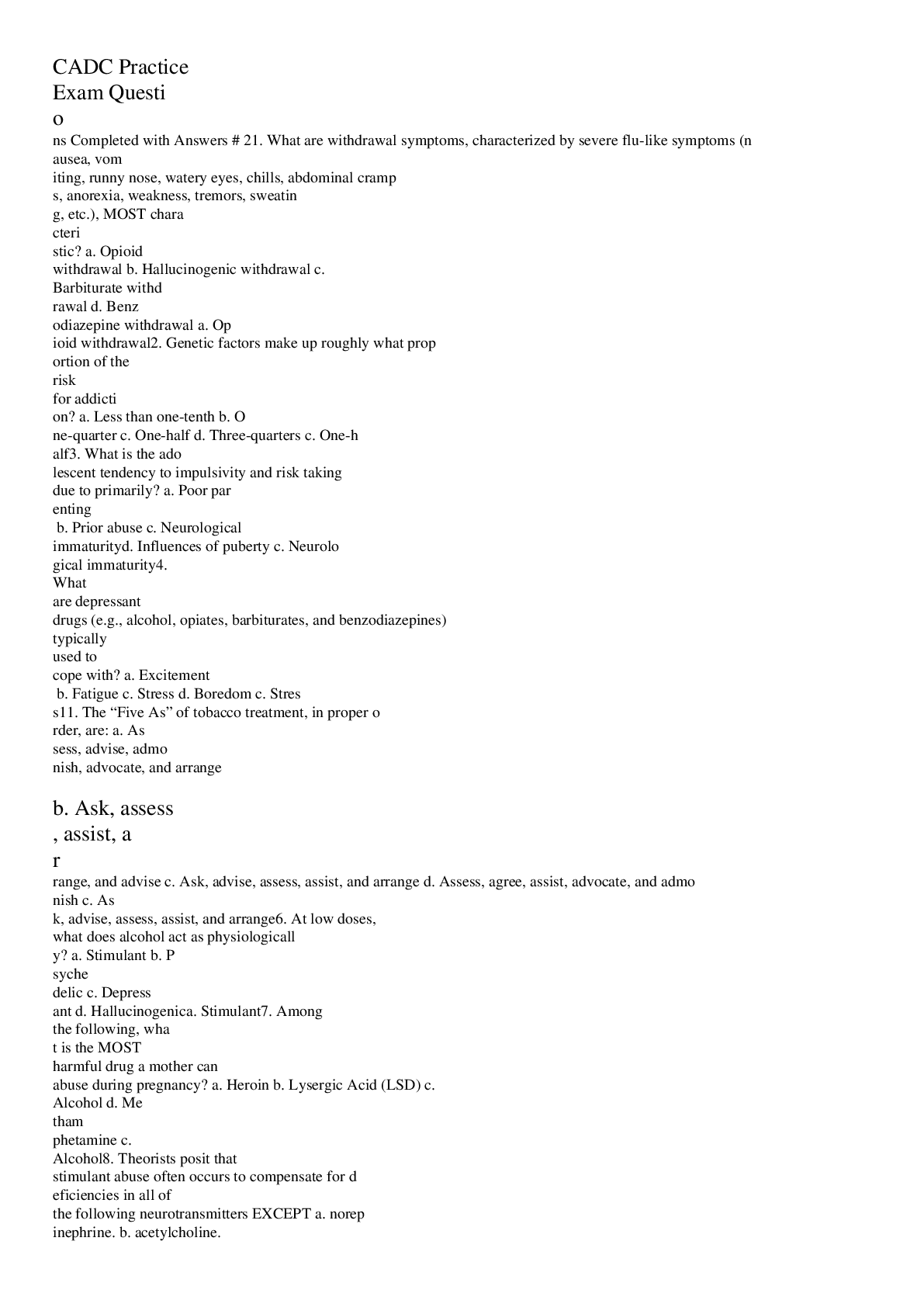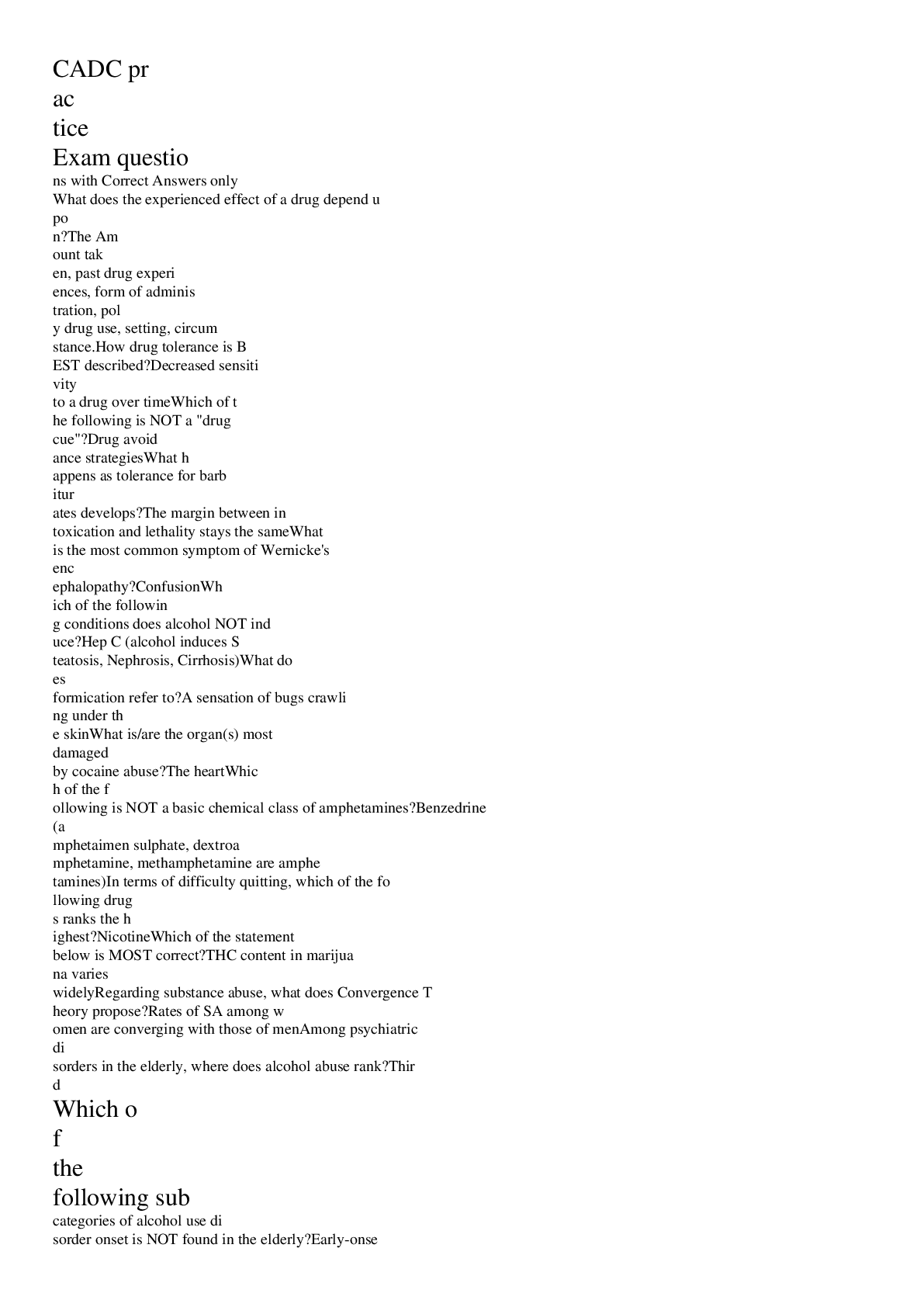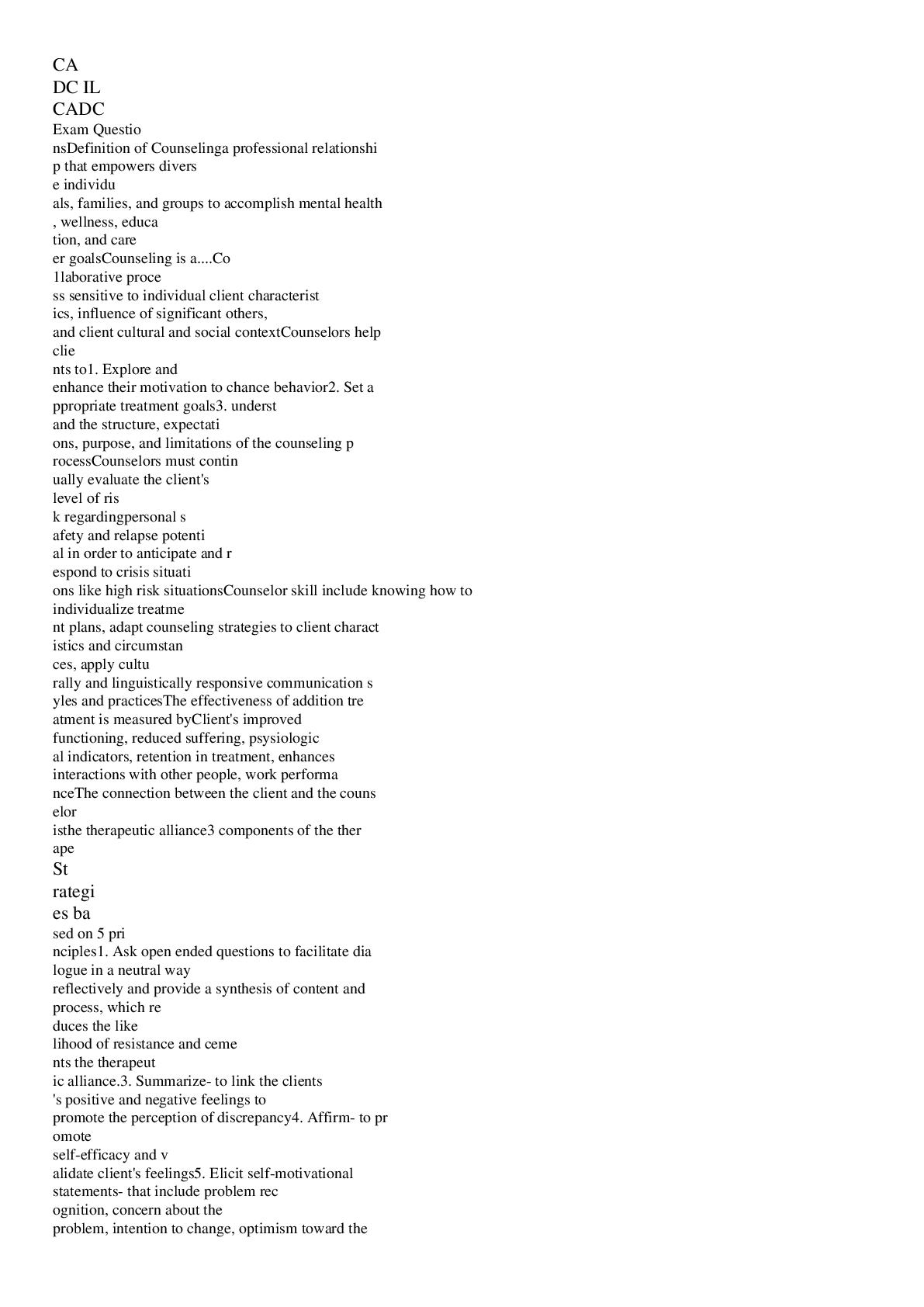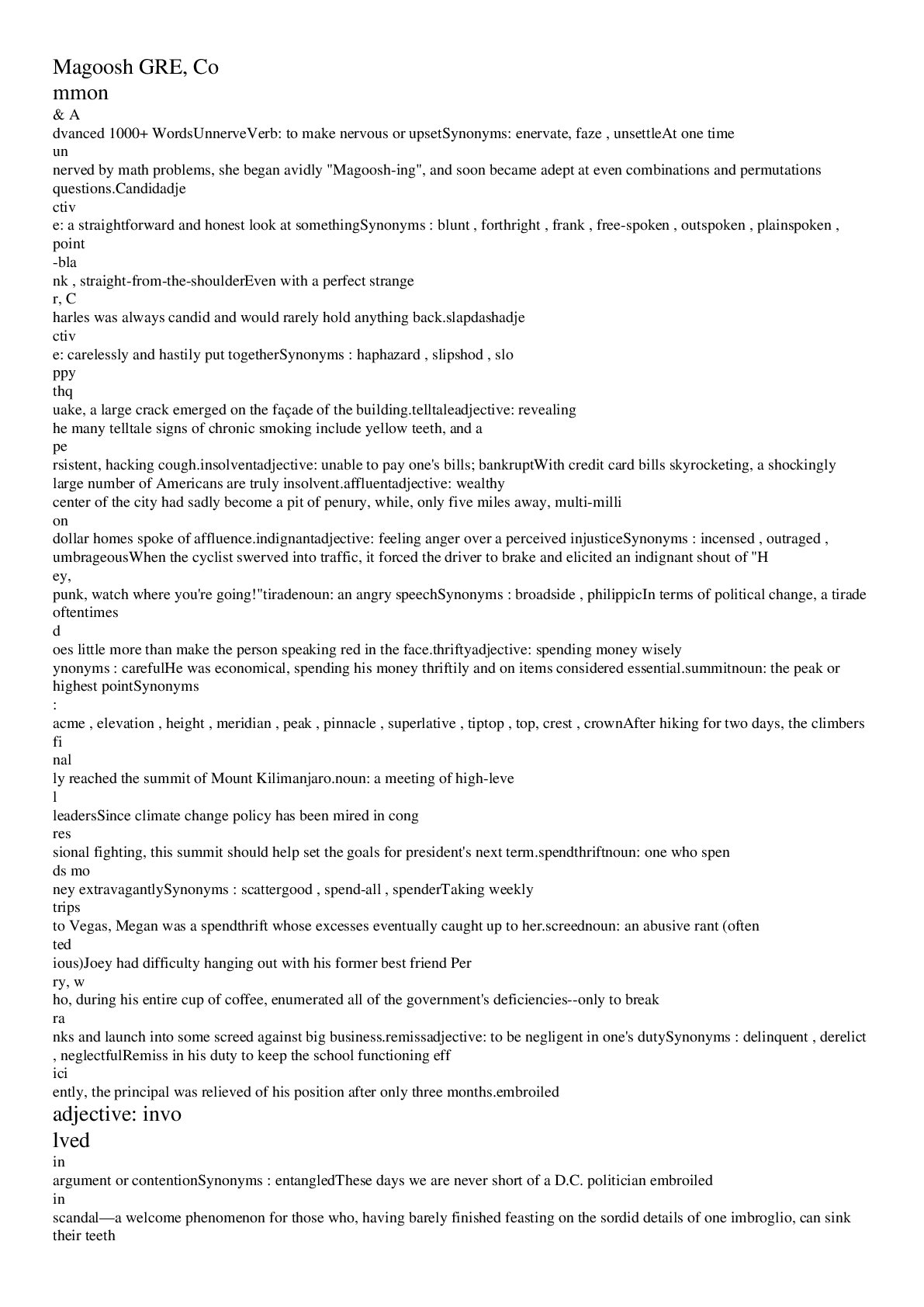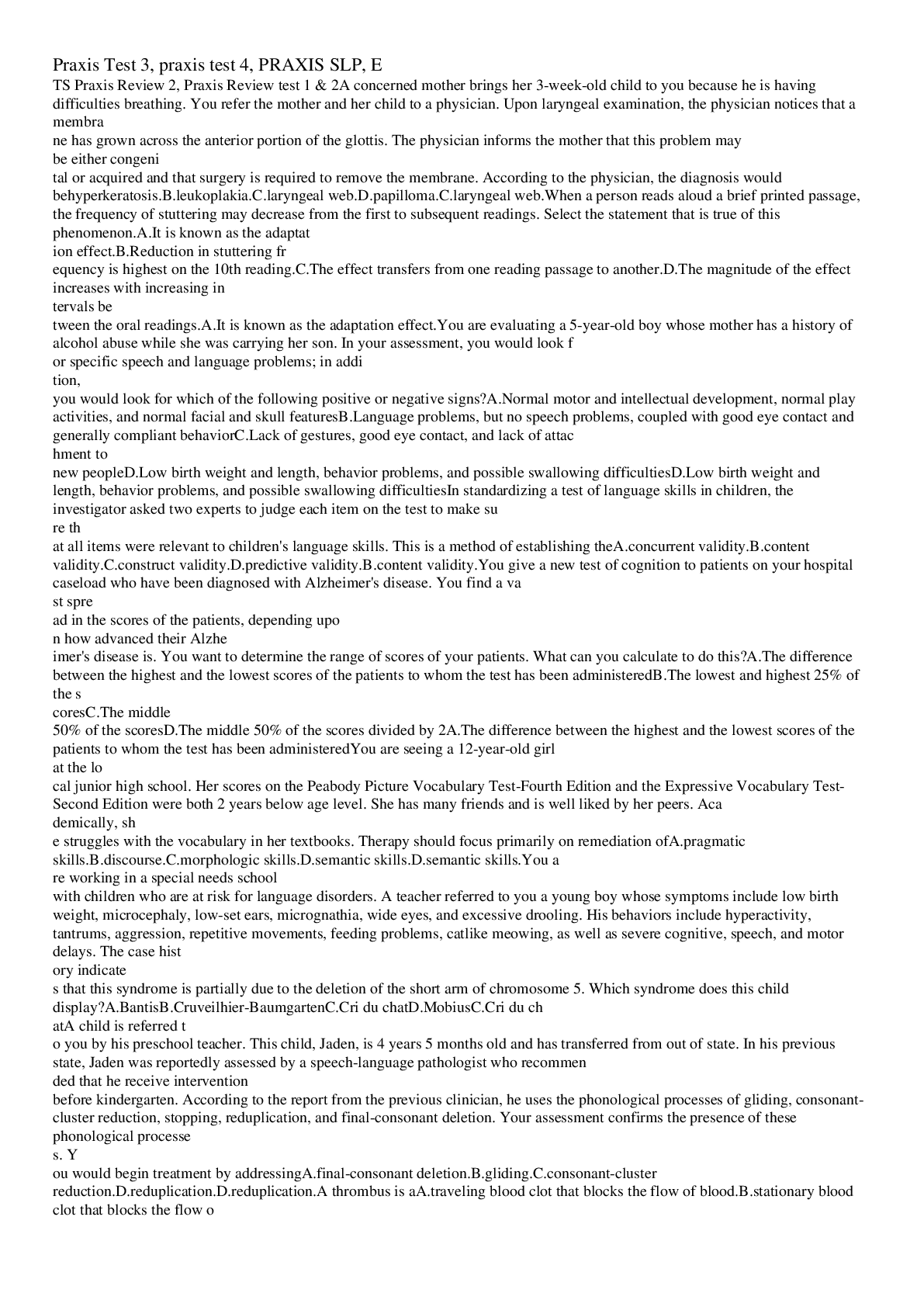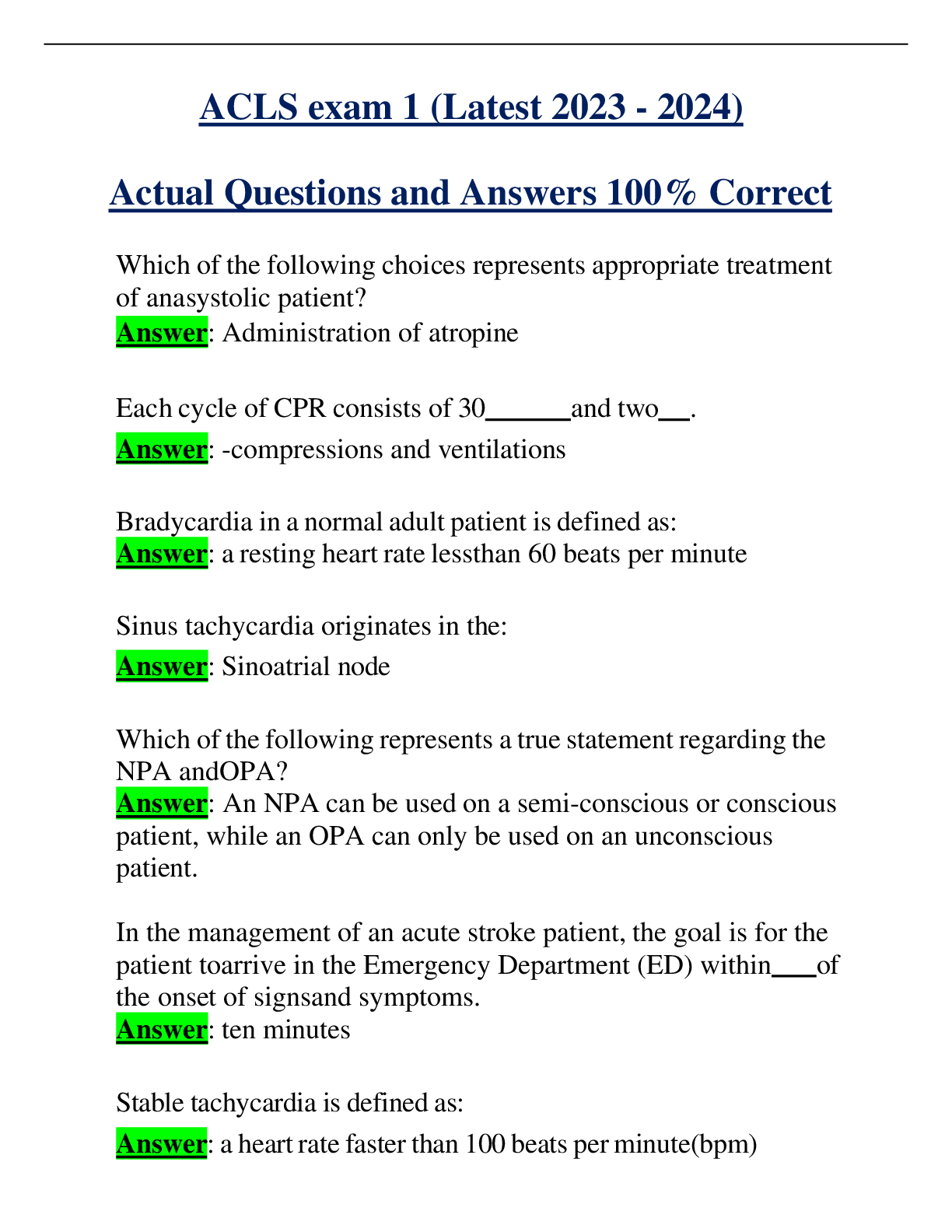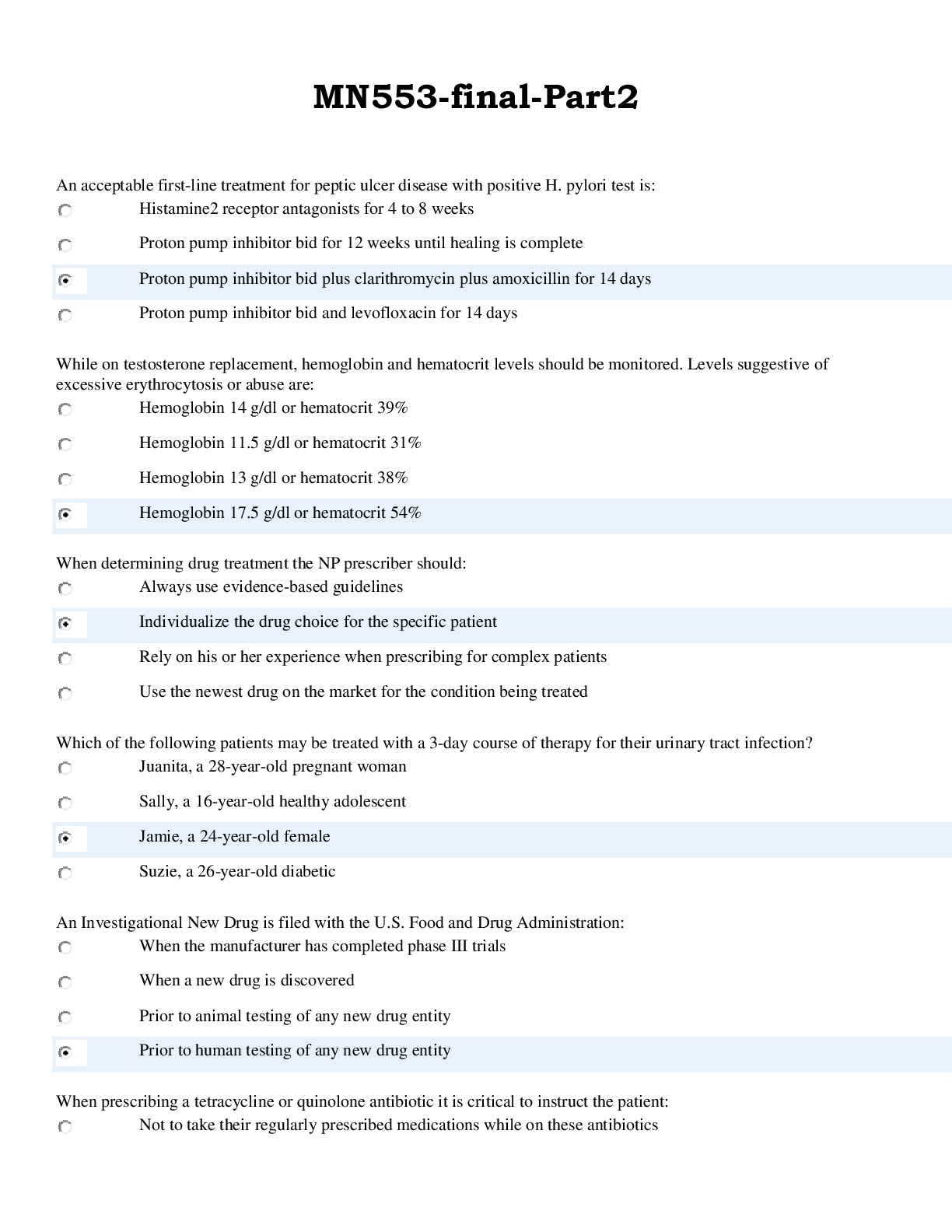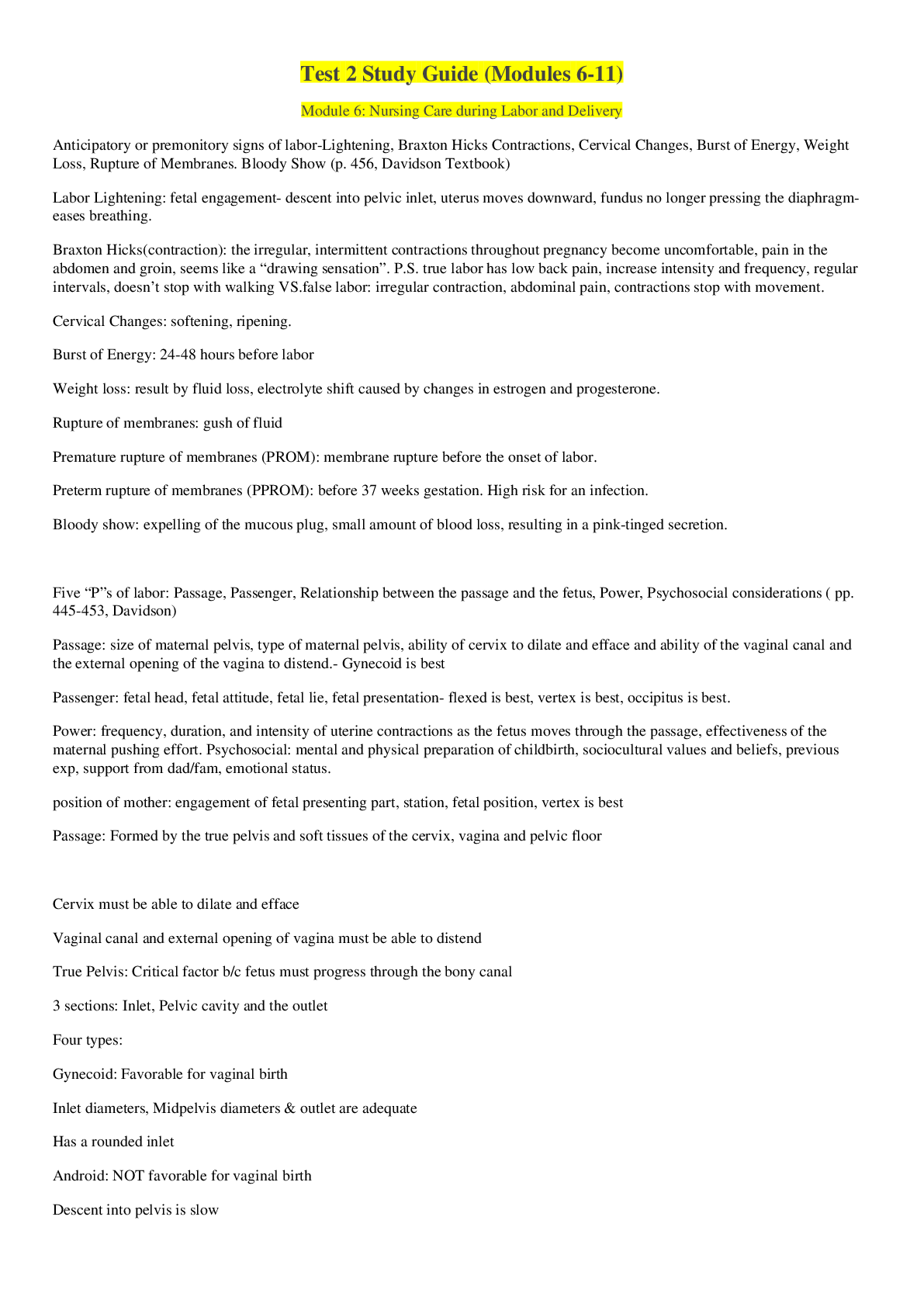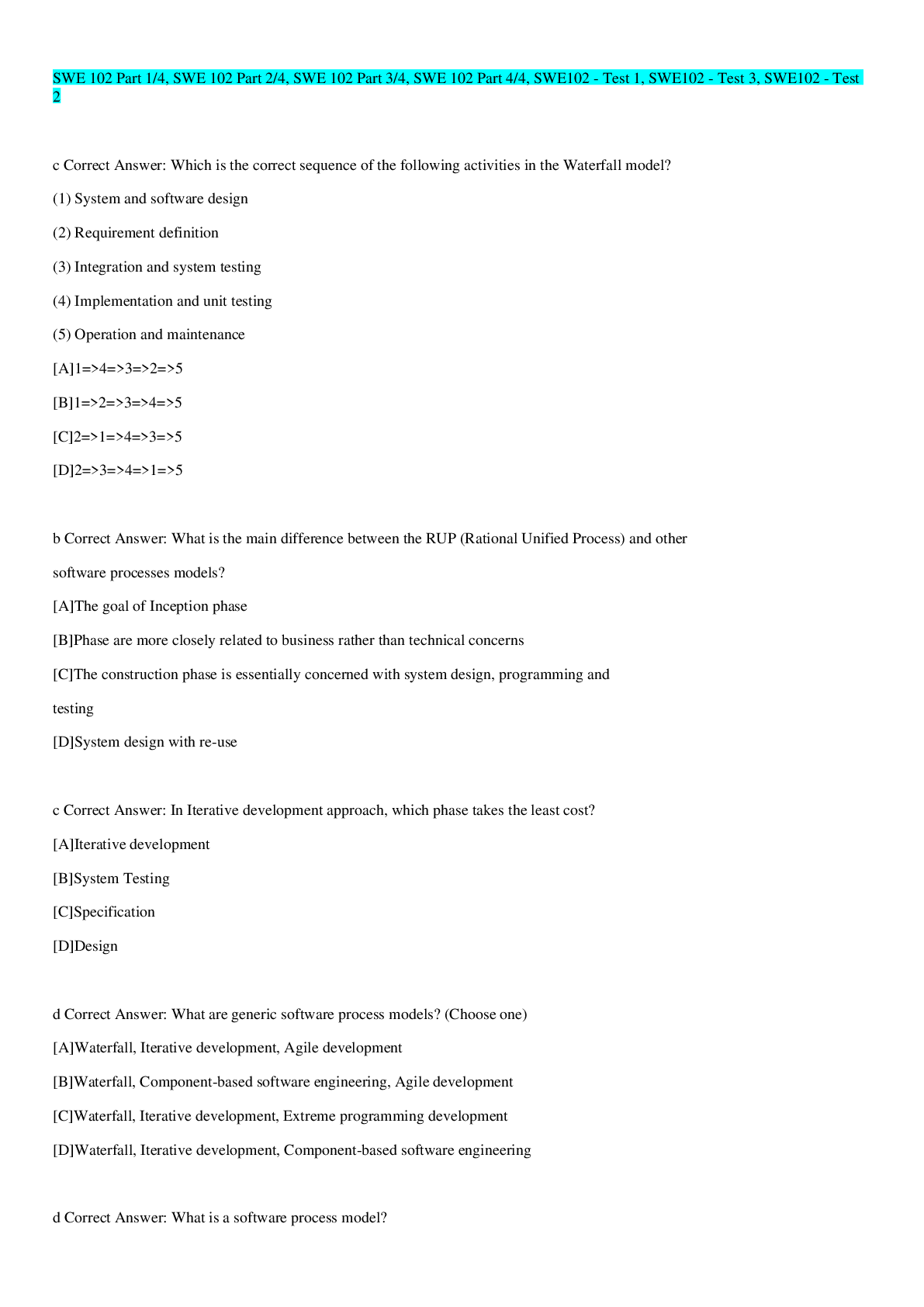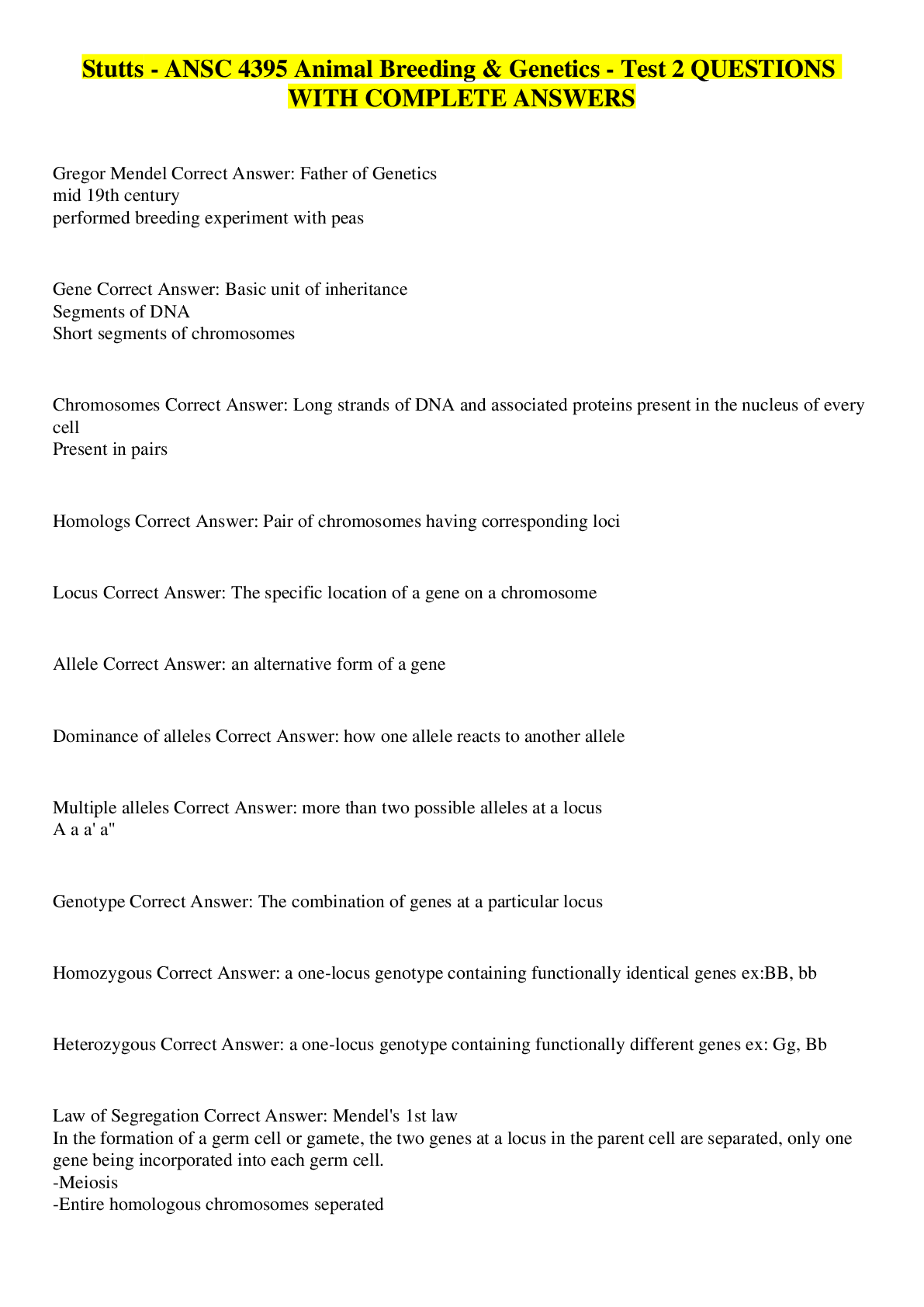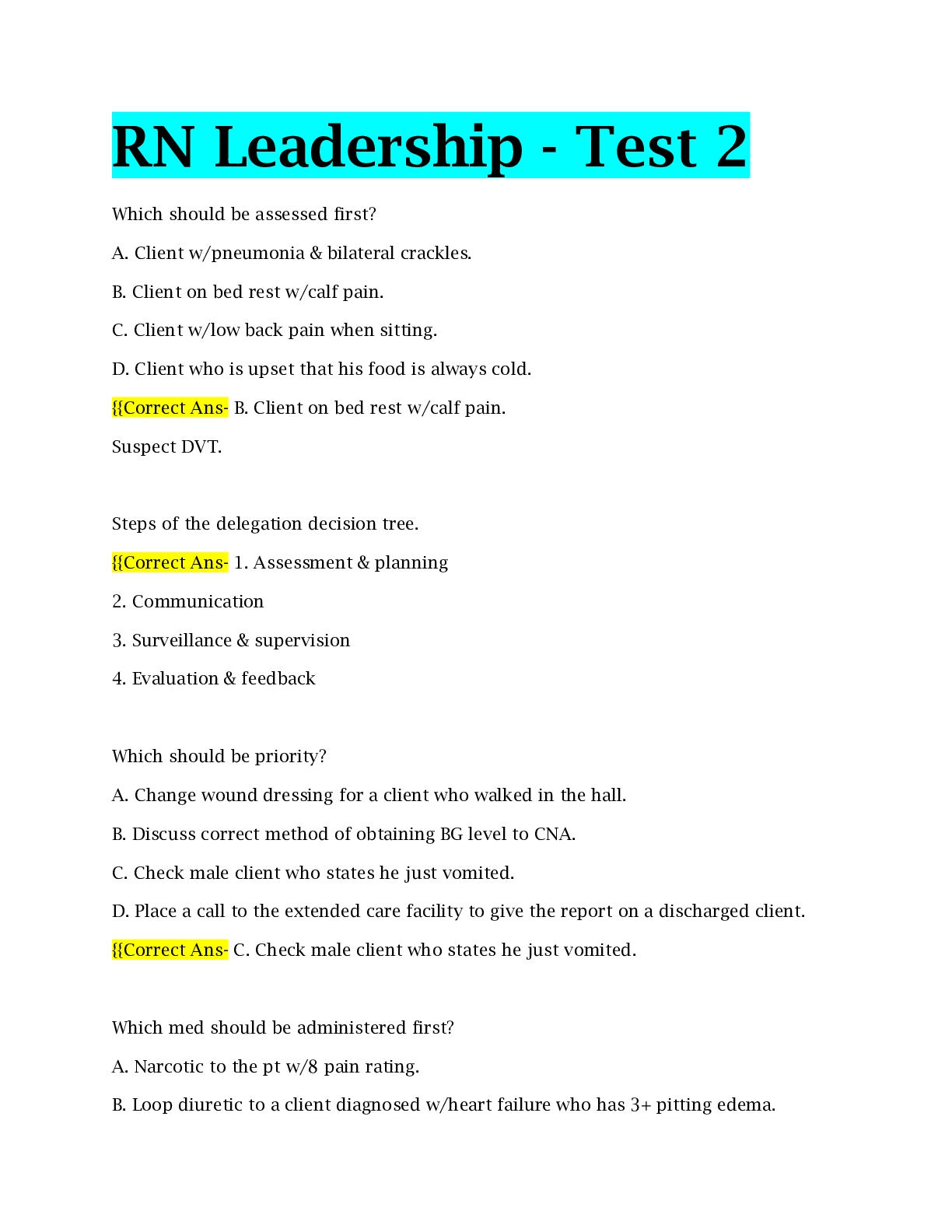English 102 - TEST 2
Document Content and Description Below
Helpful Answers test 2 Repetition of consonant sounds, the repetition of 2 or more consonants sounds in successive words in a line of verse or prose; a word group with the same letter Alliteration... A metrical foot consisting of 2 unaccented syllables followed by one accented syllable Anapest Words, phrases, clauses or sentences set in deliberate contrast to one another Anthithesis Also referred to as a slant or near rhyme, these rhymes share sound qualities or sounds within words Approximate rhyme Repetition of vowel sounds; the repetition of 2 or more vowels sounds in successive words, which creates a king of rhyme; a pattern of identical or similar vowel sounds, usually in stressed syllables of words with different end sounds Assonance A direct address to someone of something even to an inanimate object. In poetry an apostrophe often addresses something not ordinarily spoken to ; an address either to a person who is dead or not present, to an inanimate object or abstract concept, designed in part to provide insight into the character’s thoughts ApostropheUnacknowledged references – authors assume that readers will recognized and relate meaning to new context; a mention or reference of something either directly or by implication; a reference often to a historical figure, myth or artwork that exists outside literary work Allusion Also referred to as a slant or near rhyme, these rhymes share sound qualities or sounds within words Approximately rhyme A narrative poem meant to be sung; a simple short poem of folk origin, composed in short stanzas and usually sung Ballad Unrhymed lines; the most common and well known meter of unrhymed poetry in English…almost conversational in sound. Contains five iambic feet per line and is never rhymed; unrhymed verse written in iambic pentameter Blank verse A pause within a line or verse Caesura One that expresses a tone of "living for the day"; seize the day, latin origin Carpe diem poemTwo rhymed lines; two successive lines of poetry of the same metrical length, usually rhyming that form a complete unit Couplet A pleasant combination of sounds, also the repetition of consonants or group of consonants, particularly at the ends of words Consonance An idea or feeling that a word invokes in addition to its literal or primary meaning; implied or figurative meaning that a word or image carries, as distinct from its literal or explicit meaning. Connotation A metrical foot consisting of one accented syllables followed by two unaccented syllables dactyl The literal or explicit meaning that a word or image carries as distinct from its implied or figurative meaning. Dictionary definitions are usually denotative Denotation The style of speaking as dependent on choice of words; style of speaking or writing determined by the choice of words by a speaker or a writer Diction14 lines of iambic pentameter, usually divided into 3 quatrains followed by a couplet, with the rhyme scheme of abababcdcdefefgg English sonnet A poem that celebrates the achievements of mighty heroes and heroines Epic Rhyme occurring in the final word or syllables of 2 or more lines of poetry End rhyme Words that appeal to the senses and create a mental picture; its basic function is to present the physical world to experience in our imagination Imagery Words, expression that conform to a particular pattern or form, such as metaphor, simile, parallelism Figurative language In poetry, the means of measuring a meter, a foot has either 2 or 3 syllables with varying accents Foot Has no prescribed form or meter Free verseSweet, sour, bland, tangy, taste Gustatory image A technique that reveals a discrepancy between what appears to be and what is actually true (the opposite of what the reader expects to happen) Irony A 3-line poem with a total of 17 syllables (5 in the first, 7 in the middle, 5 in the last) Haiku An exaggeration; exaggerated statement or claims not meant to be taken literally; an overstatement used to express a point Hyperbole A metrical foot consisting of one accented syllable followed by one accented syllable Iamb a line of poetry consisting of 5 iambic feet iambic pentameter Lang. That triggers memories based on sights, sounds, tastes, smell and sensations of touch; in poetic writing the stress may be expressly on the image that is being described or envisoned imagerywithin the lines of a poem, words will rhyme, affecting the ear more than the rhythm as does a rhyme at the end of a line internal rhyme 14 lines of iambic pentameter, usually divided in an octet with the rhyme scheme of abbaabba followed by a sestet with rhyming schemes of either cdcdcd or cdecde Italian sonnet Feel, warm, sharp, peaceful Kinetic image Brief not developed story; word to the dead, sonnet Lyrical poem A comparison of two unlike objects; comparing 2 unlike things…symbol or emblem; figure of speech which makes an implicit, implied or hidden comparison between two things that are unrelated but share some common characteristics; a figure of speech not meant to be factually true, in which one thing is compared or substituted for something else Metaphor A figure of speech which substitutes the name of one thing with that of another with which is closely associated with in common experience MetonymyA pattern of stressed and unstressed syllables; a regular, recurring rhythm or patter or stresses and pauses, in lines of verse Meter Tells a story – a poem that tells a story and has a plot, romance poem at times Narrative poem A poem intended to a sung; a lyric poem in the form of an address to particular subject, often elevated in style or manner and written in varied of irregular meter. Ode The attempt to label a thing by forming a word from sounds associated with it Onomatopoeia A condensed paradox combining 2 contradictory terms, such as bittersweet Oxymoron 6 line stanza Octave A statement or expression playing on words that initially seems self contractor, but which provokes deep reflection on ways or contexts in which it might seem valid ParadoxHuman qualities are given to animals, objects or ideas; the attribution of human characteristics to an inanimate object Personification 5 iambic feet Pentameter Condensed art form that concentrates meaning and distills feelings, began as tribal voice, cultures handed it down, like old music, rhythm was easy to remember. Poetry reflects social consciousness of cult Poetry and brief history A kind of word play that depends upon identical or similar sounds amount words with different meanings Pun 4 line stanza quatrain Used to create memorable words and phrases Repetition The recurrence of stressed and unstressed sounds RhythmConcurrence of similar or identical sounds within different words Rhyme 6 line stanza Sestet The process of determining a poem’s rhythmic patters through recognition of stressed and unstressed syllables Scansion A comparison of two unlike objects using key words "like" or "as"; figure of speech that compares to similar uses like or as Simile A fixed verse of 14 lines written in iambic pentameter Sonnet The person who is the voice of the poem Speaker Poetric unit made of lines grouped together by rhyme and/or meter; arrangement of a certain number of lines; basic unit of a poem typically comprised of 2 or more lines StanzaSomething used to represent something else; suggests more than the literal meaning; the practice or art of using an object or a word to represent an abstract idea Symbol A figure of speech in which a part signifies the whole or the whole signifies the whole or the whole signifies the part synecdoch A statement about the subject Theme Communication strong anti war opinions, that it is foolish, brutal, meaningless, where there can be no winders Trench poets A metrical foot consisting of one accented syllables followed by one unaccented syllable Trochee The poem's attitude or feelings toward the theme Tone Deals with speaker and tone, represents writers subject of the matter voice"Poetry" Marianne Moore The author of her book Anne Bradstreet "London"; "Sick Rose"; "Chimney Sweeper"; "The mind-forged manacles I hear"; "Has found on thy bed / Of crimson joy" William Blake "How Do I Love Thee?"; "I shall but love thee better after death" Elizabeth Browning "Annabel Lee" Edgar Allan Poe "Woodchucks" Maxine Kumin "Road Not Taken", "Stopping by the Woods on a Snowy Evening"; "I took the one less traveled by / And that has made all the difference"; Birches Robert Frost "Shall I Compare Thee to a Summer's Day" William ShakespeareShe Walks in Beauty Lord Byron Edwin Robinson Richard Cory To the Virgins Robert Herrick Lady Lazarus; Mirror Sylvia Plath "To His Coy Mistress" Andrew Marvell "Red Red Rose"; "Love is like a red red rose / That's newly sprung in June"; "And I will come again, my Luve, / Tho' 'twere ten thousand mile!" Robert Burns "But at my back I always hear / Time's winged chariot hurrying near" Andrew Marvell"If only they'd all consented to die unseen / gassed underground the quiet Nazi way" Maxine Kumin "My little horse must think it queer / To stop without a farmhouse near" Robert Frost "How do I love thee? Let me count the ways" Elizabeth Browning "And be one traveler, long I stood / And looked down one as far as I could" Robert Frost "Next morning they turned up again, no worse / for the cyanide than we for our cigarettes" Maxine Kumin "Love you ten years before the Flood; / And you should, if you please, refuse / Till the conversion of the Jews."; "And your quaint honour turn to dust, / And into ashes all my lust"; "The grave's a fine and private place, / But none I think do there embrace" Andrew Marvell "And the hapless soldier's sigh / Runs in blood down Palace walls" William Blake"And having perhaps the better claim, / Because it was grassy and wanted wear;"; "The woods are lovely, dark and deep, / But I have promises to keep, / And miles to go before I sleep," Robert Frost "I, a lapsed pacifist fallen from grace / puffed with Darwinian pieties for killing," Maxine Kumin The Cross Langston Hughes subject person/thing that is being discussed, described or dealt with. theme subject of a talk/piece of writing, person's thoughts, or topic speaker person who speaks formally before an audience/person in a poem or story who is narrating tone attitude of a writer towards a subject or an audience lyric having the form/musical quality of a song.narrative spoken/written account of connected events/story dramatic monologue a poem in the form of a speech or narrative by an imagined person/speaker inadvertently reveals aspects of their character while describing a particular situation or series of events ballad poem typically arranged in the quatrains with rhyme scheme ABAB quatrain verse/poem with four lines that has an independent and separate theme stanza four or more lines having a fixed length, meter or rhyme scheme couplet two successive rhyming lines(same meter) in a verse that come together to form a complete thought. image/imagery: visual, auditory, kinesthetic, olfactory (smell), gustatory word/phrase in a literary work that appeals directly to reader's taste, touch, hearing or smell; using figurative language to represent objects, actions and ideas in a way to appeal to our physical sensessimilie like or as (yass u know this i'm not writing a definition) sight rhyme agreement in spelling but not in sound of the ends of words in poems (words that look like they rhyme but they actually don't, like have and grave) [Show More]
Last updated: 2 years ago
Preview 1 out of 17 pages
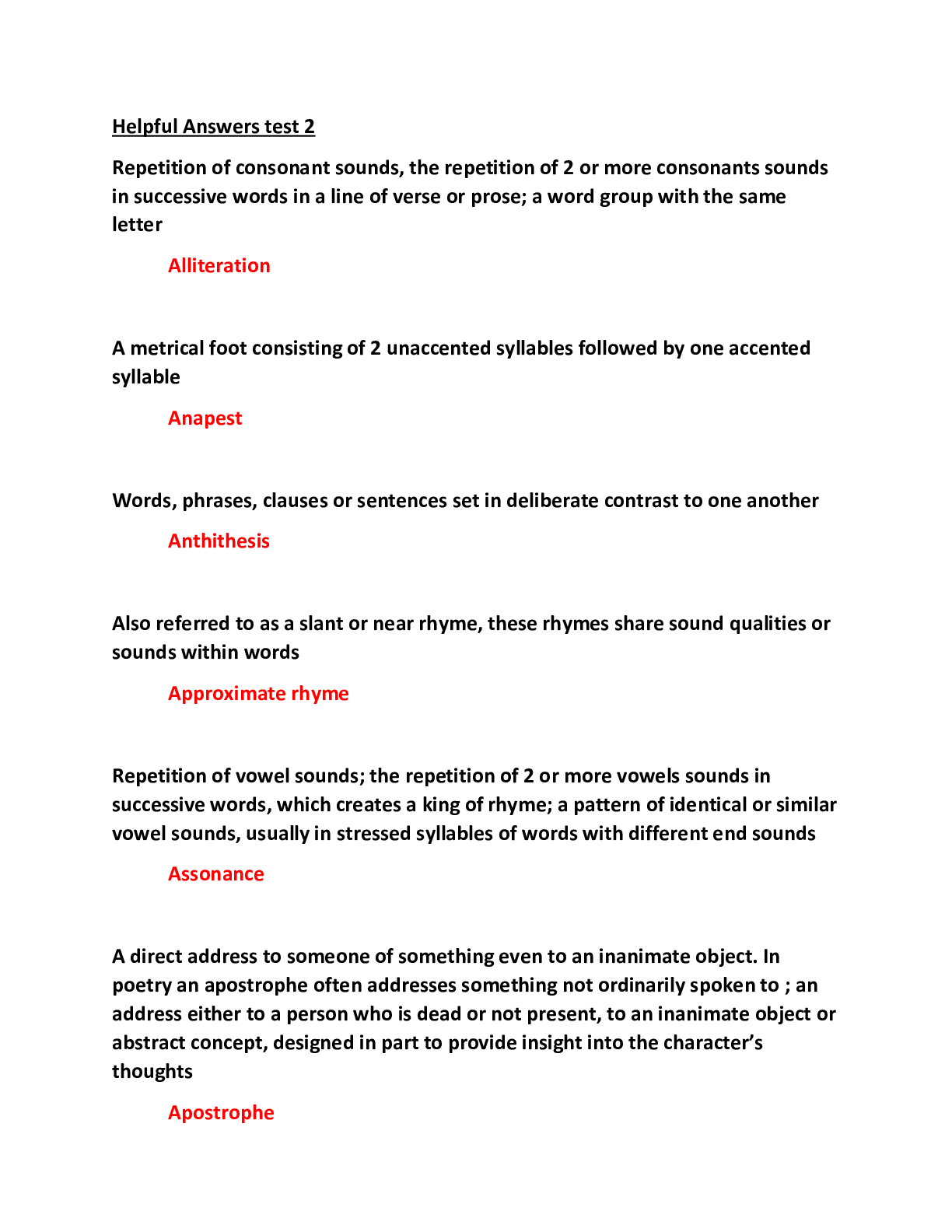
Buy this document to get the full access instantly
Instant Download Access after purchase
Buy NowInstant download
We Accept:

Reviews( 0 )
$8.00
Can't find what you want? Try our AI powered Search
Document information
Connected school, study & course
About the document
Uploaded On
Aug 21, 2020
Number of pages
17
Written in
Additional information
This document has been written for:
Uploaded
Aug 21, 2020
Downloads
0
Views
119

